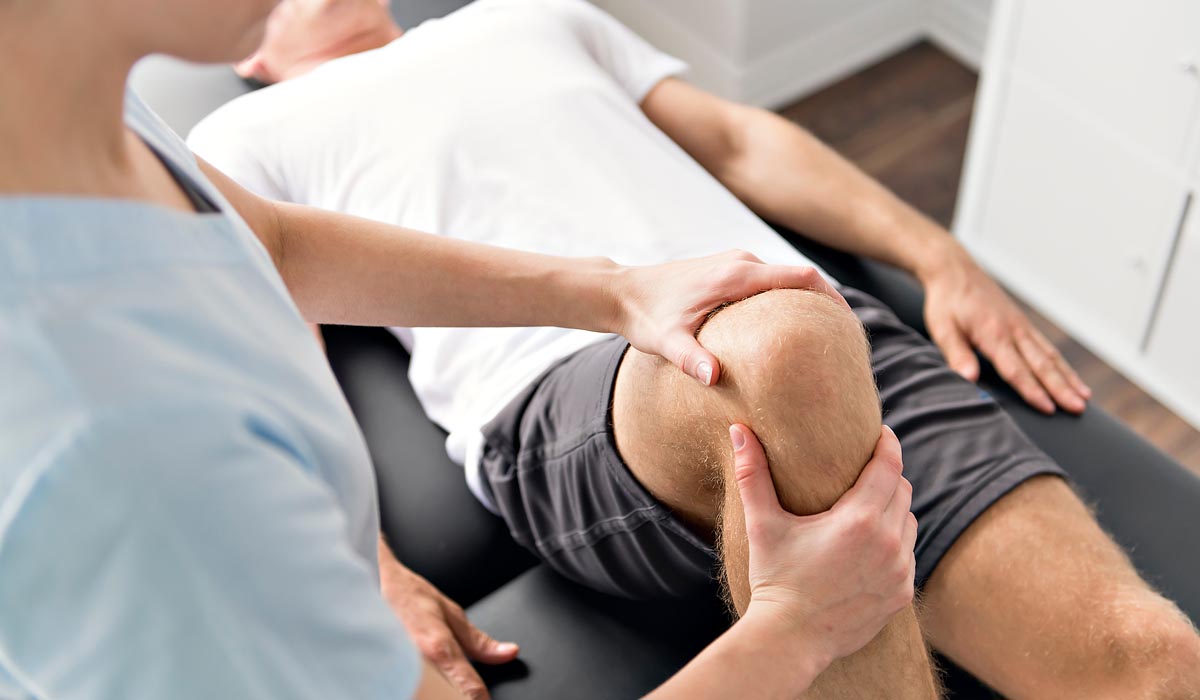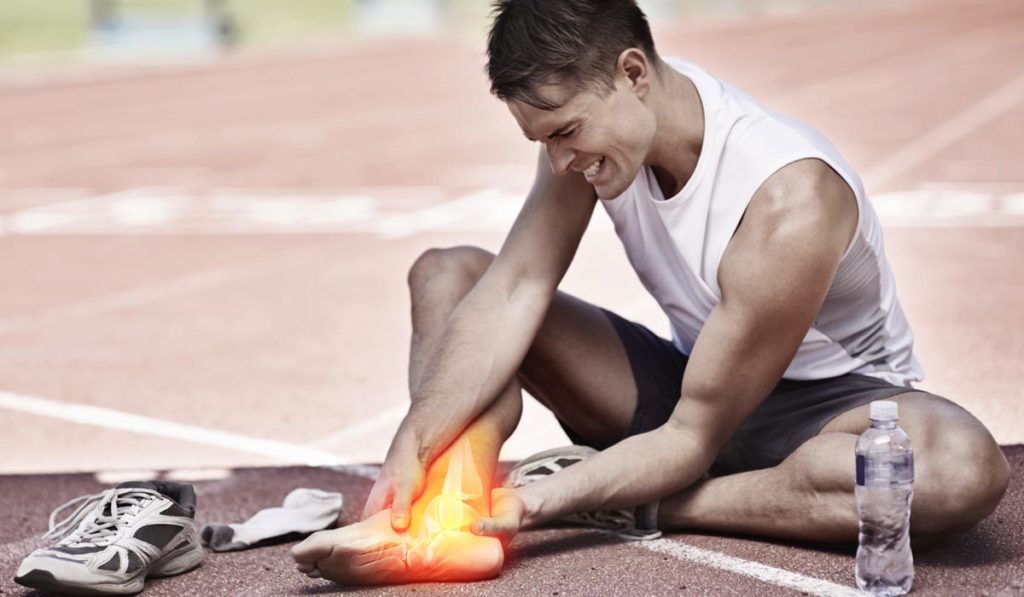10 Most Common Sports Injuries and Ways to Avoid Them
Common sports injuries are typically brought on by inadequate stretches or warm-ups before an activity, by not using the proper safety equipment, by poor form during training, or by overexertion. There is always a possibility of injury, regardless of whether you play sports professionally or just for enjoyment. Even if you are in good physical form, sports can still be physically taxing and lead to injuries. 10 most common sports injuries and ways to prevent them are discussed below:
1. Knee Injuries
The knee has a particular category for potential injuries because it is a complicated joint that experiences a lot of stress and wears during most sporting activities. Common knee injuries include cartilage rips, displacements, fractures, and Anterior Cruciate Ligament (ACL) tears.
Knee injuries can be excruciatingly painful and incapacitating, and surgery may be necessary for extreme situations. Athletes can lessen their chance of knee injuries by warming up, stretching, and wearing the appropriate padding and bracing.
2. Strains
Since most activities involve various muscles and tendons, strains are the most frequent sports injuries. A muscle or tendon strain happens when they have been overextended or torn.
Tendons are threads of connective tissue that join bone to muscle. These tissues can become painful, spastic, swollen, or difficult to move if pulled or twisted. The back and hamstrings frequently experience muscle strains.
Fortunately, strains are usually minor and recover quickly, but if you experience significant discomfort, kindly consult a doctor.
3. Sprains
Sprains are also relatively frequent, particularly in sports that require fast turns. A ligament is a tissue that holds bones together at a joint. When a ligament stretches or tears, it causes a sprain. Ligaments may be pulled or damaged when they twist in the wrong way. In contrast to a strain, a sprain causes more severe pain and requires more time to heal. In some circumstances, immobility is necessary to stop additional harm.
Ankle sprains are the most prevalent type of sprain, where the three ligaments on the outside of the ankle are torn or stretched due to an unnatural movement. A minor sprain doesn’t always need immediate medical care, but extensive sprains may necessitate surgery to mend the entirely damaged ligaments.
4. Tennis Elbow
Tennis elbow, often known as golf elbow, happens when the tendons in your forearm become strained from overuse due to repetitive action in the wrist or arm. Repetitive actions required by sports like tennis and golf can strain the muscles and result in tiny tears in the tendons.
People in jobs that require them to labor actively with their hands while performing repetitive chores are also susceptible to developing tennis elbow. Stretching exercises and regular rest periods between movements are the best ways to avoid tennis elbow.
5. Rotator Cuff Injuries
The rotator cuff, a group of interconnected muscles and tendons, surrounds your shoulder joint. They aid in maintaining the stability and movement of the shoulder by keeping the humerus, the head of the upper arm bone, securely within the shoulder’s small socket.
Sports like swimming, tennis, or baseball that call for repetitive motion can result in injuries to this area. Common symptoms include shoulder swelling, pain when reaching behind the back, and discomfort when raising the arm.

6. Fractures
A fracture is a full or partial bone crack frequently brought on by a strong impact during contact sports. Fractures are most prone to happen after a fall. You’ll immediately experience pain and swelling if you have a fracture, and you’ll probably be unable to move the affected area.
Bone fractures, which most frequently happen in the arms, legs, and feet during competitive sports, constitute a more severe sports injury that might require weeks of immobilization and occasionally surgical intervention.
You can reduce the danger by warming up, using the proper technique, exercising to preserve flexibility, and wearing the appropriate safety gear. It’s crucial to avoid “playing through the pain,” as this could indicate a strain or sprain that, if ignored, could render the bone more prone to fracture.
7. Back Injuries
Injuries to the back are particularly prevalent in athletes and persistent exercisers because, like your knees, they are subjected to considerable stress from physical activity. Inflammation that builds up around the back muscles and vertebrae causes injuries, which can harm the discs in your upper and lower back.
Most severe back injuries recuperate in under three months, but more serious instances may require surgery and a longer healing time. If the discomfort extends to your legs, lasts more than two months, or you experience any changes in your balance or bowel motions, you should seek medical attention.
8. Shin Splints
When muscles, tendons, and other tissues near the shinbone or tibia become inflamed, it is referred to as having shin splints. This inflammation is brought on by high-impact motions such as sprinting, jumping, abrupt stops and starts, and repetitive stress injuries. Many runners, soccer players, and basketball players experience this injury.
Pain, sensitivity, and stiffness are apparent indicators of the condition. At the very least, a shin splint can be treated with appropriate stretching and rest. You must consult a doctor if the discomfort lasts more than a few days and is not relieved by applying ice or using painkillers.
9. Concussion
Traumatic brain injuries like concussions alter how your brain works and influence your memory, stability, and coordination. The injury is brought on by the vigorous motion of the brain that occurs after a blow to the head, which forces it to suddenly travel back and forth inside the brain and strike the walls of the skull. Football and soccer are two contact sports where concussions are most frequent. Headaches, nausea, and unconsciousness are possible symptoms.
Concussions need to be treated immediately by a doctor specializing in head injuries because they are more severe injuries that might result in complications.
10. Groin Pull
The muscles in the thighs, which surround the groin, can become overstretched or torn under excessive pressure. Sports involving a lot of running and jumping are more likely to result in groin pulls.
You will feel soreness in the groin or inside the muscles of your thighs if you do pull your groin, making it difficult to close your legs or lift your knees. With a minor tear, you will only experience soreness and diminished strength. But, more severe groin strains can cause excruciating pain and a loss of muscular function due to the significant rip.
A strained groin can be treated with over-the-counter pain relievers and icing the damaged muscles.
Ways to avoid common sports injuries
Although we can’t predict when typical sports injuries will occur, we can avoid them as much as possible. Most injuries happen because our bodies aren’t nearly prepared for the strain that sports place on our muscles. However, by taking specific measures, you will be better equipped to participate in your favorite sports and less prone to sustain injuries. Here are some tips to avoid sports injury:
- Wear the appropriate safety equipment (shin guards, helmets, padding, etc.)
- Stretch and warm up before the activity.
- Use the proper technique.
- Increase your flexibility and muscle strength.
- If you experience an injury, stop playing.
- If you believe an injury is turning worse, visit a doctor.
- Cool down after the activity.
- Keep yourself hydrated.
Why choose 7DMC?
Our Sports Medicine & Orthopedics Department comprises highly experienced and world-class professionals. From evaluation and diagnosis through rehabilitation and sports injury prevention, our experts are by your side at every stage. Our team of sports medicine specialists will identify the type of injury you sustained, eliminate any discomfort or swelling, and design a treatment plan to help expedite your recovery.
Summary
Everyone, including seasoned athletes and sports enthusiasts, especially kids, is susceptible to common sports injuries. The best way to prevent typical injuries is to ensure your body is ready for any activity. Stretching, warming up, and drinking enough water is essential. While rest and painkillers are frequently effective treatments for many ailments, some may have a more extended healing period. If you get one of these sports injuries, keep an eye on your condition and seek medical attention for a quick recovery.
References:
healthline.com/health/sports-injuries#statistics
medicinenet.com/what_are_the_10_most_common_sports_injuries/article.htm
medicalnewstoday.com/articles/248796#Tips-for-Injury-Prevention-in-Young-Athletes
- CATEGORIES : Sports Medicine





